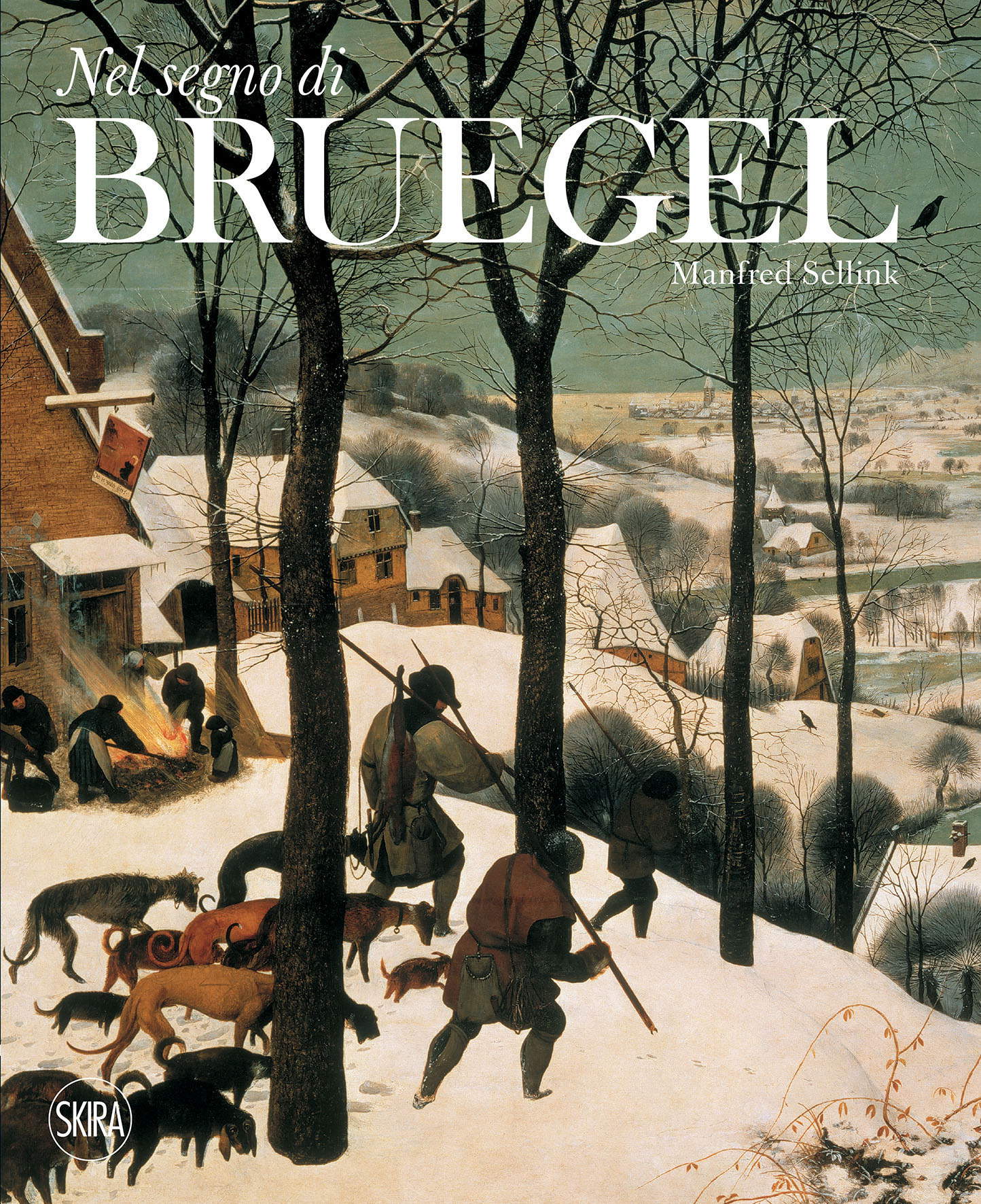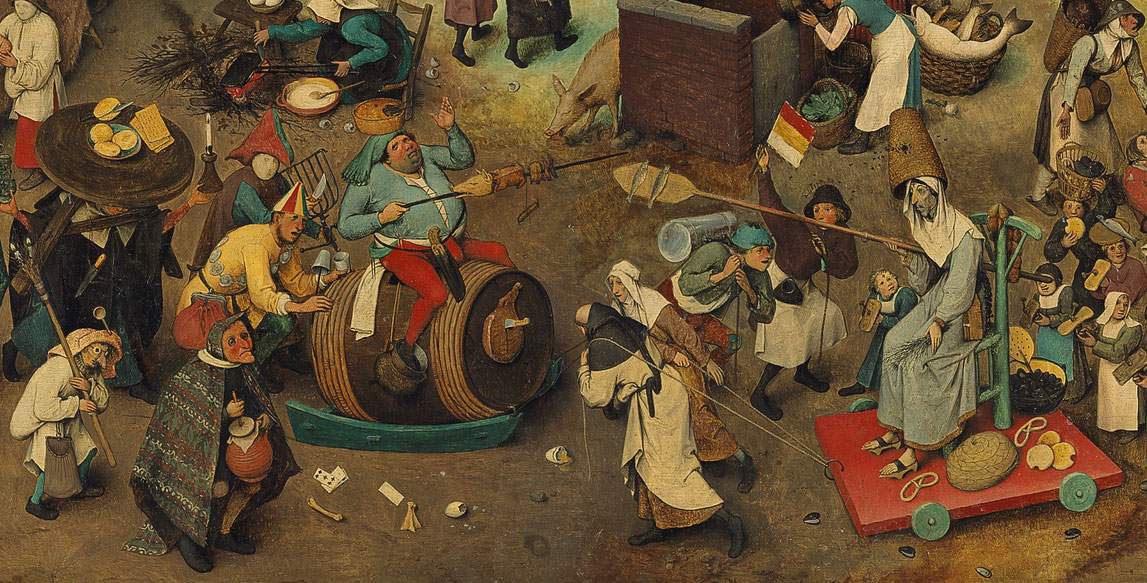In the sign of Bruegel: a journey through the worlds of the great 16th-century artist in a book by Manfred Sellink
Almost three hundred pages (288 to be precise), two hundred of which are color plates, an important format (24 by 32.5 cm), and the signature of one of the leading experts on the subject: these are the features of the book Nel segno di Bruegel (In the Sign of Bruegel ) by Manfred Sellink, a monograph on the great Pieter Bruegel the Elder (Breda, c. 1525/1530 - Brussels, 1569) published by Skira and among the new additions to the Milan publisher’s catalog, since it was presented at the end of 2019. The author, Manfred Sellink, is the director of the Koninklijk Museum voor Schone Kunsten (Royal Museum of Fine Arts) in Antwerp, Belgium, and author of the catalog raisonné of the Brabantine painter, but not only that: Sellink boasts in his curriculum vitae the identification of an unpublished drawing by Bruegel and the discovery of a painting by the artist in a private Spanish collection (now instead housed in the Prado Museum: it is The Wine of the Feast of St. Martin, dating from 1566-1567).
The volume is presented as a lunge into the main themes of Bruegel’s work, commented on through a survey of fifty-eight masterpieces, including some of the most celebrated works by the artist from Breda, from the Construction of the Tower of Babel of 1563 (now at the Kunsthistorisches Museum in Vienna) to the Land of the Cockaigne of 1567 (preserved at the Alte Pinakothek in Munich), from the Dulle Griet in Antwerp to the Parable of the Blind of 1568 (one of the few works by Bruegel preserved in Italy: it is in the Museo Nazionale di Capodimonte in Naples). The main strength of In the Sign of Bruegel lies precisely in the iconographic apparatus: details are offered throughout the book with high-resolution images, and one has a chance to appreciate every single and most minute brushstroke (while whole paintings, albeit with four images per page, are instead offered at the beginning of the book, catalogued in chronological order), and interesting is the idea of devoting space to graphic production as well, thanks to the presence, at the opening of the catalog (and, of course, punctuating the entire volume), of some of Bruegel’s most significant drawings (the engravings, on the other hand, are missing, due to a precise choice of the author). Bruegel’s, Sellink explains in the book’s introduction, is an art capable “of rendering in a realistic, or rather illusionistic, manner even the most minute details,” since “attention to detail was an essential feature of the miniature, which in the southern Netherlands experienced a period of flowering in the late fifteenth and early sixteenth centuries.” In Bruegel’s work, Sellink explains, “there is an obvious influence of Simon Bening and his contemporaries, and it is likely that he himself had training as a miniaturist, perhaps with Mayken Verhulst, his future mother-in-law and famous miniaturist. This would explain not only his interest in minute and refined details, but also his technical skill in keeping what he drew and painted recognizable and legible down to the smallest details.”
Of course, it is not only the attention to minute details that makes Bruegel’s art great: on the technical level, the formal integrity of his compositions always responds to a well-defined logical order that came after very careful studies (the few remaining sketches are evidence of this, although, Sellink speculates, the artist probably had to produce hundreds, if not thousands of them). In terms of content, the artist went down in history above all for his distinct sense of humor, put to good use even in the most tragic everyday situations. The book, after an introduction dedicated to landscapes, a genre in which Bruegel left some masterpieces such as the Winter Landscape with Bird Trap and where, however, his “view of the world” is not lacking (as, moreover, from the title of the first section: a world where man is at the mercy of nature despite trying to get the upper hand over her), offers an in-depth study dedicated to the “turbulent era” in which the artist lived. An age of political, social, and religious upheaval, an age of poverty and violence, which Bruegel, as a Brabant who lived at the time of the Protestant Reformation, felt particularly strongly, since his lands, as is well known, were crossed by an iconoclastic wave that did not spare paintings, books, and images of all kinds. Bruegel’s bitter reflections on poverty fill paintings such as The Struggle Between Carnival and Lent, The Crippled Beggars or the aforementioned Wine of the Feast of St. Martin where we witness a tragicomic brawl among the poor (the feast was celebrated on November 11 and it was customary to offer wine to the poor: and here, Sellink explains, Bruegel wanted to emphasize “the paradox of an act of mercy that ends up fueling intemperance,” in the manner of the taste for the absurd and the unreasonable that connoted Flemish and Dutch sarcasm).
And always the religious clashes of the time led Bruegel to confront the theme of the system of vices and virtues established by the morality of the time (and by morality, of course, we mean religious morality), which are explored not only in paintings that focus on episodes from the life of the time, but are also the subject of a series of drawings for engravings where vices and virtues are personified: laziness is thus a woman sleeping on top of a donkey resting her head on a pillow held by a devil, pride is a richly attired lady looking at herself in a mirror and accompanied by a peacock, gluttony is a banquet of monsters gorging themselves until they collapse to the ground, and on the other hand, hope guides a ship into harbor saving it from the stormy sea, faith is a church packed with worshippers, and prudence is instead an industrious community of peasants preparing for winter. All of Bruegel’s allegories, moreover, are peopled with “demons and monsters,” who become the protagonists of the fourth section of the book, where Bruegel is juxtaposed with Bosch (“both masters,” Sellink explains, “deploy extraordinary imagination and inventiveness in creating monsters and bizarre creatures of all sorts, transforming animals, men and everyday objects into the most extravagant whims.”). However, the painter was also able to bring to life less shocking visions, with allegories capable of conveying uplifting content, though never in a direct manner and always playing on the edge of ambiguity (as in Children’s Games, where many of the little protagonists seem almost more like miniature adults than children, emphasizing on the one hand how play and fun are ageless, and on the other how blurred is the boundary between play and madness).
The third to last section continues on the thread of irony (“Arguy and Irony” is the title), with an in-depth look at the tones of Bruegel’s humor, which sees one of its salient features in the use of paradox andallusion, and thehumanitydiverse (children, peasants, beggars, schoolchildren, hunters) that the Breda painter paints on his panels and draws on his sheets becomes the protagonist of a chapter devoted to “Faces and Emotions,” since Bruegel was among the first artists, in the Netherlands, to systematically investigate the emotions of his characters, especially in his peasant scenes. “Joy of life,” on the other hand, is the last theme explored by Sellink, according to whom this feeling would be evoked by Bruegel’s entire production: a great observer and investigator of contemporary reality (although there is hardly any “realism” in his work as we might understand it today: his works are more a continuous and constant allusion than analyses), a painter endowed with an uncommon inventiveness and capable of the most unusual oddities, Bruegel was an artist nevertheless capable of conveying an intense vitality: witness to this are works such as Spring, Haymaking, Reaping, Land of the Cockaigne, and the Country Dance with which the book closes.
In the Sign of Bruegel is intended first and foremost to be a popular publication intended also for a public that is unfamiliar with Dutch and Flemish art of the time: a “journey,” as Sellink himself defines it, through the motifs that animated his art, and while not lacking the scholarly approach typical of a scholar of his caliber, the director of the Antwerp Museum of Fine Arts, in the foreword, well specified that he also wanted to give the book a personal nuance. The reason is to be found in Bruegel’s art itself: in fact, we know very little about the Brabant painter and, as it turns out, his works are never obvious, they are never straightforward, they constantly lend themselves to different readings and different interpretations, which is why the approach to Bruegel can sometimes be conditioned by the different ways in which the fascination of his paintings reaches the recipient. Here, then, is the purpose of the book: “to convey,” Sellink explains, “something of the fascination, wonder and admiration that the masterful work of Pieter Bruegel never ceases to arouse in me.” The scholar obviously does not let the artist speak for himself, but his commentary proves to be an enjoyable and stimulating guide to the many worlds of one of the most astonishing artists of the sixteenth century.
Manfred Sellink
In the Sign of Bruegel
Skira publisher
2018
288 pages (hardback)
45 euros
Book details on the publisher’s website
In the images below: the book cover and a detail from The Struggle Between Carnival and Lent (1559; oil on panel, 118 x 164.5 cm)
 |
 |
| In the sign of Bruegel: a journey through the worlds of the great 16th-century artist in a book by Manfred Sellink |
Warning: the translation into English of the original Italian article was created using automatic tools. We undertake to review all articles, but we do not guarantee the total absence of inaccuracies in the translation due to the program. You can find the original by clicking on the ITA button. If you find any mistake,please contact us.




























